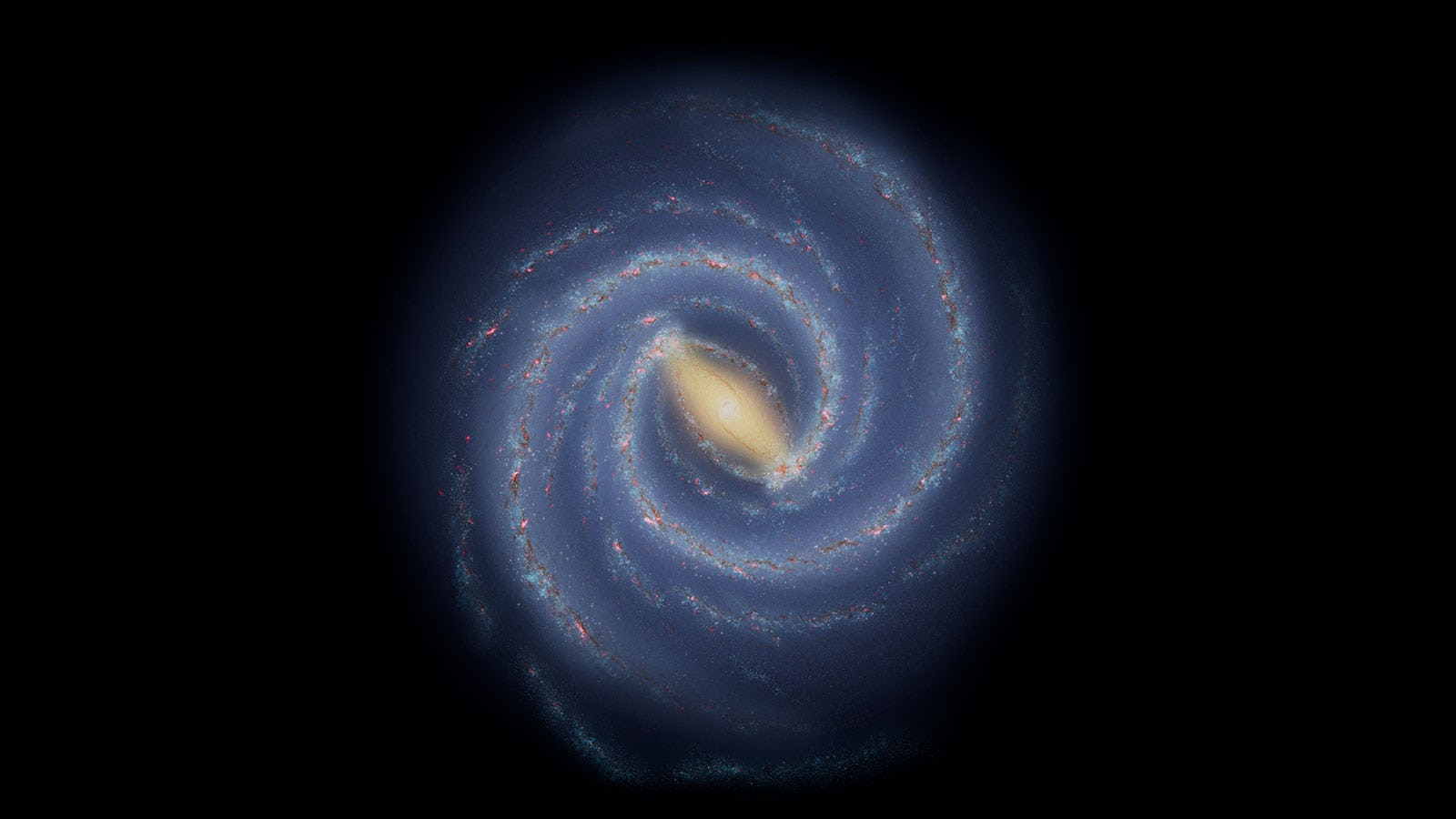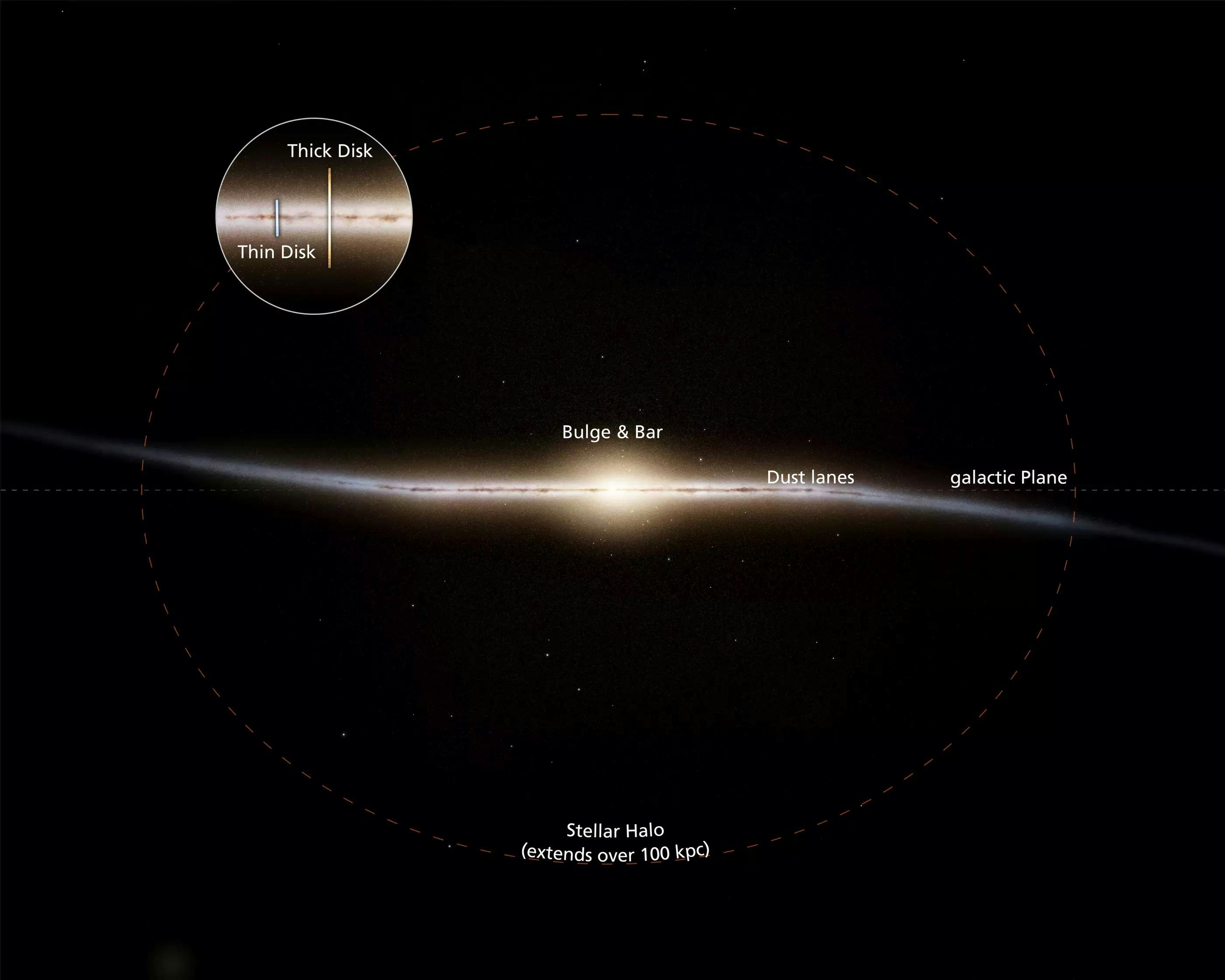
Just as fossils shed light on how life evolved on Earth, so too can stars reveal how galaxies evolved over time. However, calculating the precise age of a star can prove very challenging. But in a study published Wednesday in Nature, astronomers have deduced the sequence of events that might have led to our galaxy’s formation. All they had to do was look at a rare type of star known as a subgiant that can act like a cosmic timepiece.
WHAT IS A SUBGIANT STAR? — Stars come in many sizes. For instance, our sun is a yellow dwarf, whereas Betelgeuse, the right shoulder of the constellation Orion, is a red supergiant.
The size of a star depends not just on the mass it was born with, but also on its age. For example, after the Sun begins to exhaust its fuel roughly 5 billion years from now, it will swell to become a red giant.
Subgiants are brighter than dwarf stars but not as bright as giant stars. A relatively low-mass star like the Sun briefly goes through a subgiant phase when it depletes the hydrogen fuel within its core, which causes its heart to start to collapse under its own weight, driving a spike in temperature. This stage only lasts a few million years, ending when the star enters the giant phase of its evolution, when hydrogen in a shell around the core begins fusing, driving a rapid expansion of its outer layers.
The brightness and surface temperature of a subgiant is related directly to how old that star is. This means subgiants can enable the most precise known estimate of a star's age. Such data can prove key in unraveling the chronology of a galaxy.

WHAT DID THE SCIENTISTS DO? — Since the subgiant phase is relatively short, detections of it proved rare. Only a few percent of the stars in the Milky Way exist as subgiants at any given time.
In the new study, astronomers examined position data and distances for nearly 1.5 billion stars from the European Space Agency's Gaia space observatory and chemical and temperature data for more than 9 million stars from the Large Sky Area Multi-Object Fiber Spectroscopic Telescope in China. This helped them identify roughly 250,000 subgiants.
"Astronomers have longed for a sufficiently precise method to estimate the ages of individual stars in the Milky Way," astrophysicist Timothy Beers at the University of Notre Dame in Indiana, who did not take part in this research, tells Inverse. "The new approach using results from Gaia and the LAMOST spectroscopic survey provides just such an approach. The implication that is most important is that we now can put a clock on how the various pieces of the Milky Way were assembled over time, which is quite exciting."
These new findings improve the number of stars with precisely estimated ages by a hundredfold. They also cover a large extent of the Milky Way, as well as a range of ages from 1.5 billion years old to the age of the universe, 13.8 billion years old.
"It is like going from recalling an ambiguous memory of one's childhood to watching a clearly recovered life-story movie," study lead author Maosheng Xiang, an astrophysicist at the Max Planck Institute for Astronomy in Heidelberg, Germany, tells Inverse. "This is the start of a new era of galactic archaeology, where we can precisely date the events that happened in the Milky Way's history and put the events in a time sequence."
WHAT DID THEY FIND? — The Milky Way is made up of two main parts — the disk, which possesses most of the galaxy's stars, and a roughly spherical halo, likely made up largely of the remains of dwarf galaxies the Milky Way absorbed. The disk in turn is divided into a thin disk, which includes the sun, and a thick disk with older stars, whereas the halo consists of a flatter inner halo and a rounder outer halo.
Until recently, most astronomers believed the Milky Way's halo formed before the disk, Xiang says. However, the new findings reveal the Milky Way's thick disk was likely the first structure to emerge in the galaxy, already beginning to form about 13 billion years ago, just 800 million years after the Big Bang.
The inner halo finished assembling roughly 11 billion years ago, when the proto-Milky Way merged with the Gaia-Sausage-Enceladus dwarf galaxy. These new findings also reveal that most of the stars in the thick disk formed in a burst about the same time, Xiang notes.

Analyzing the age and chemistry of the Milky Way's stars revealed the thick disk likely formed from highly turbulent gas that thoroughly mixed the matter within it for 5 billion to 6 billion years. This roughly 6,000 light year-thick disk then apparently exhausted much of its initial supply of hydrogen fuel and star formation within it all but ended.
After this turbulent era, the Milky Way still received a steady inflow of moderate amounts of hydrogen fuel from intergalactic space. This resulted in the roughly 2,000 light year-thick thin disk. Our galaxy then settled into a long and relatively boring adulthood starting about 8 billion years ago, without any major collisions and merger with other galaxies. This kind of quiet life may be the norm for galaxy evolution, given recent computer simulations.
All in all, "the current work is perhaps the first that build a full picture of the galaxy's formation," Xiang says, "from very recently to the edge of the time."
WHAT'S NEXT? — Discovering more about the Milky Way's formation can "also help us understand the history of other galaxies," Xiang says. "The Milky Way is an ordinary spiral disk galaxy, among billions of similar galaxies in the universe."
Still, these new findings reveal the Milky Way began forming soon after the Big Bang. It remains uncertain how many other galaxies like the Milky Way are that old, which in turn makes it unknown how much these new findings about the Milky Way may apply to other galaxies. "Upcoming observations by the James Webb Space Telescope may give us the answer," Xiang says.







